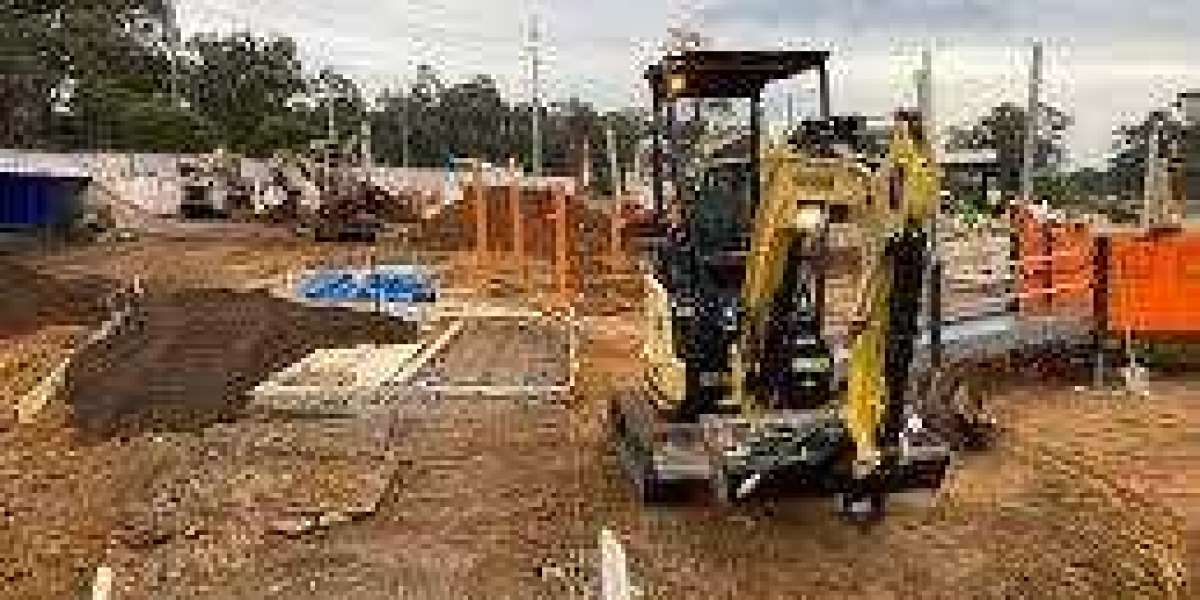When it comes to construction, landscaping, or any project that requires earthmoving, soil removal is a crucial first step. Whether you're clearing a site for a new build, landscaping your backyard, or removing contaminated soil, the process of soil removal Sydney involves several factors that demand careful planning and professional execution. This comprehensive guide will walk you through everything you need to know about soil removal, from the basics to the benefits, methods, and considerations that ensure the job is done efficiently and safely.
Understanding Soil Removal: What Is It and Why Does It Matter?
What is Soil Removal?
Soil removal is the process of excavating and relocating soil from a particular area. This might be necessary for a variety of reasons, including construction, landscaping, road building, or removing contaminated soil. The scope of soil removal can range from small-scale residential projects to large-scale commercial and industrial endeavors. Regardless of the project size, the goal is to clear the land and prepare it for its intended use, while also ensuring environmental safety and compliance with local regulations.
Why Is Soil Removal Important?
Soil removal is vital for various reasons:
- Site Preparation: Before any construction can begin, the land must be cleared and leveled. This often involves the removal of topsoil, rocks, debris, and any vegetation that may interfere with building foundations or infrastructure.
- Environmental Safety: In cases where soil is contaminated with hazardous substances, like asbestos or chemicals, safe removal and disposal are crucial to prevent environmental damage and health risks.
- Landscaping Projects: For garden and landscaping projects, soil removal allows for the installation of new features like ponds, flower beds, or retaining walls.
- Improved Drainage: Removing soil can help improve water drainage around a property, preventing flooding or waterlogging that can cause long-term damage.
Factors to Consider Before Soil Removal
Assessing the Soil Type
Not all soil is created equal. Before beginning a soil removal project, it's essential to understand the type of soil on your site. Different soils—such as clay, sand, silt, or loam—have varying characteristics that affect how they are removed and managed. For example, clay soil can be dense and challenging to excavate, while sandy soil is loose and may require additional support to prevent shifting or collapse during removal.
Determining the Scope of the Project
The extent of the soil removal required will significantly impact the approach you take. A small backyard project might only need a few cubic meters of soil removed, while a large commercial construction site could involve thousands of cubic meters. Accurately determining the scope of the project will help in selecting the right equipment, workforce, and disposal methods.
Compliance with Local Regulations
Soil removal in Sydney must comply with local regulations and environmental standards. This includes obtaining the necessary permits, adhering to waste disposal guidelines, and ensuring that the removal does not negatively impact the surrounding environment. Failing to comply with these regulations can result in hefty fines, legal issues, and project delays.
Choosing the Right Contractor
Selecting a qualified and experienced excavation contractor is crucial for a successful soil removal project. The right contractor will have the necessary equipment, knowledge of local regulations, and expertise to handle any challenges that arise during the removal process. They will also be able to provide a detailed plan and cost estimate, ensuring there are no surprises along the way.
Methods of Soil Removal
Manual Removal
For smaller projects, manual soil removal may be the most practical option. This involves using hand tools like shovels, spades, and wheelbarrows to remove soil. While manual removal is labor-intensive and time-consuming, it is ideal for areas that are difficult to access with machinery or where precision is required.
Mechanical Removal
Larger projects typically require mechanical soil removal using heavy machinery such as excavators, backhoes, bulldozers, and dump trucks. Mechanical removal is faster and more efficient than manual methods, making it suitable for large-scale construction and landscaping projects.
Common Types of Machinery Used:
- Excavators: These are versatile machines used for digging, lifting, and moving large quantities of soil.
- Bulldozers: These machines are used to push large amounts of soil, rocks, or debris and are ideal for site leveling.
- Dump Trucks: Essential for transporting soil from the site to a disposal location.
Vacuum Excavation
Vacuum excavation is a non-destructive method that uses high-pressure air or water to loosen the soil, which is then sucked up by a powerful vacuum system. This method is particularly useful for sensitive sites where underground utilities like gas lines, water pipes, or electrical cables are present, as it minimizes the risk of damage.
Soil Disposal and Recycling
Once the soil is removed, it needs to be disposed of responsibly. In Sydney, several licensed facilities accept soil for disposal or recycling. Clean soil can often be reused in other construction or landscaping projects, while contaminated soil must be treated and disposed of according to strict environmental guidelines.
Benefits of Professional Soil Removal Services
Efficiency and Expertise
Hiring professional soil removal services ensures that the job is done efficiently and correctly. Experienced contractors have the necessary equipment and expertise to handle various soil types, navigate challenging site conditions, and adhere to local regulations. This reduces the risk of project delays and unexpected costs.
Safety First
Soil removal can be hazardous, especially if the site contains contaminants or underground utilities. Professionals are trained to handle these risks safely, using appropriate protective equipment and following industry best practices to minimize danger to workers and the surrounding environment.
Cost-Effective Solutions
While hiring a professional service may seem like an added expense, it often proves more cost-effective in the long run. Professionals can complete the job faster, with fewer mistakes, and can help you avoid costly fines or repairs resulting from non-compliance or damage.
Proper Waste Management
Professional soil removal services include proper waste management and disposal. This is particularly important if the soil is contaminated, as improper disposal can lead to environmental damage and legal repercussions. A reputable contractor will ensure that all soil is disposed of according to local regulations, protecting both your property and the environment.
Common Challenges in Soil Removal
Unexpected Soil Conditions
One of the most common challenges in soil removal is discovering unexpected soil conditions, such as the presence of rocks, underground utilities, or contaminated soil. These issues can delay the project and increase costs. Conducting a thorough site assessment and working with experienced professionals can help mitigate these challenges.
Weather Conditions
Weather can significantly impact soil removal projects. Heavy rains can make the ground muddy and difficult to excavate, while dry conditions can create dust hazards. Planning for weather-related delays and ensuring that the site is adequately prepared for all conditions is essential for a successful project.
Access and Logistics
Access to the site can be a challenge, particularly in urban areas where space is limited. Narrow streets, overhead power lines, and nearby structures can complicate the use of heavy machinery. Proper planning and coordination with local authorities can help overcome these logistical challenges.
Preparing for Soil Removal: A Step-by-Step Guide
Step 1: Site Assessment
Begin with a comprehensive site assessment to understand the type of soil, the extent of removal needed, and any potential challenges. This assessment should also identify any contaminants present in the soil, as well as any underground utilities that could be affected.
Step 2: Obtain Permits
Before starting any soil removal project, ensure that all necessary permits are in place. This includes local council permits, environmental permits, and any other required documentation. Failure to obtain the proper permits can result in fines and project delays.
Step 3: Develop a Soil Removal Plan
Create a detailed soil removal plan that outlines the scope of work, equipment needed, disposal methods, and safety precautions. This plan should also include a timeline for the project, taking into account potential delays due to weather or unexpected site conditions.
Step 4: Hire a Qualified Contractor
Select a reputable contractor with experience in soil removal in Sydney. Ensure that they have the necessary equipment, insurance, and knowledge of local regulations. A good contractor will also provide references and a transparent cost estimate.
Step 5: Execute the Plan
Once all preparations are complete, execute the soil removal plan with the chosen contractor. Monitor the progress closely and communicate regularly with the contractor to address any issues that arise during the project.
Step 6: Post-Removal Inspection
After the soil removal is complete, conduct a post-removal inspection to ensure that the site is clear of soil and debris and that no damage has occurred to the surrounding area. If the soil was contaminated, verify that it was disposed of according to local regulations.
Tips for a Successful Soil Removal Project
- Plan Ahead: Early planning can help prevent delays and reduce costs.
- Choose the Right Contractor: Selecting an experienced and reputable contractor is key to a successful project.
- Be Aware of Local Regulations: Understand and comply with all local laws and guidelines for soil removal and disposal.
- Communicate Clearly: Maintain open lines of communication with your contractor throughout the project.
- Prepare for the Unexpected: Be flexible and prepared for any challenges that may arise, such as unexpected soil conditions or weather delays.








